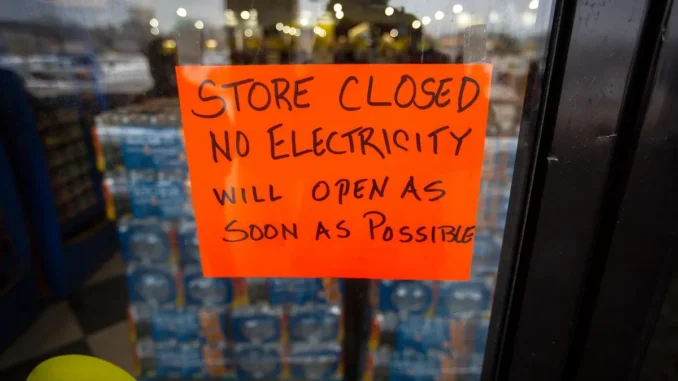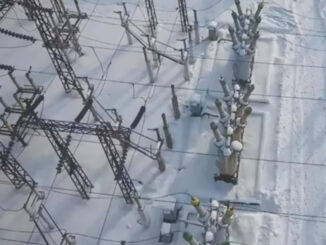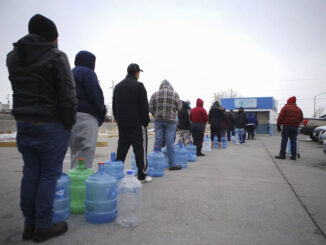
Last month, parts of Texas were hotter than 99% of the Earth and electricity demand reached new heights. But the lights stayed on, even though nearly 10 gigawatts (GW) of power were offline due to failures at coal and nuclear plants, with solar and energy storage picking up the slack.
These power plant failures follow 2021’s Winter Storm Uri, which left millions of Texans without power and caused hundreds of deaths. During that “Big Freeze,” natural gas plants and their infrastructure were the primary culprits of massive blackouts. Unfortunately, politics and special interest groups have often obscured the truth about what actually occurred during the 2021 “Big Freeze” while blocking real solutions.

The result is a legislative session like the one Texas just concluded, which featured “solutions” running the gamut from all-out war on renewable energy to fossil fuel handouts. And when the gavel banged to close the Texas legislature’s 88th session, the state’s electric grid was no more secure than when it opened.
But legislators didn’t just pass bad policy—they ignored good policy. Throughout the spring, discussions focused on electricity supply while largely ignoring customer-side solutions. That’s ominous, considering Texas set an all-time high in electricity demand in June, before the dog days of summer. And rising temperatures exacerbated by climate change mean demand will continue smashing records as people keep cranking their ACs higher.
Energy efficiency and demand-response are powerful tools that could lower energy demand, especially when temperatures are extreme. Demand management, as they’re collectively known, is a resource that reduces strain on the system and saves consumers money. Its value was highlighted during the recent heat wave, when calls to conserve energy mitigated system constraints. However, the most effective demand-side solutions never made it through the legislature this session.
A messy spring high on rhetoric and low on solutions
“I would say that at the start of the session, what was being proposed was not just bad, but comically bad, comic book villain bad, and what you ended up with was mediocre bad,” R Street Institute’s Josiah Neeley told the Energy Markets podcast.
It’s true the worst ideas floated during this session didn’t come to fruition, including potentially unworkable permitting requirements for renewable energy projects and onerous fees for them to connect to the grid. If they’d succeeded, it could have cost consumers money, worsened air pollution, and done nothing to improve reliability. In fact, the amendments could have cost Texans more than $10 billion a year, had they passed, in addition to killing the state’s renewables industry.
Texas-based energy consultant Doug Lewin wrote, “a remarkable coalition of environmentalists, industry organizations and business groups — including more than 50 chambers of commerce, manufacturers, generators, oil and gas advocates and others — stopped very real efforts to shut down the renewable energy industry in Texas.”
Beyond failing to fix the grid, halting renewable growth in Texas would have hurt the state’s economy. Clean energy already employs more than 42,000 Texans and has attracted nearly $100 billion of in-state investment. And more is one the way—by 2030 the Inflation Reduction Act could create more than 100,000 new clean energy jobs in Texas while adding $15 billion to the state’s GDP.
Unfortunately, lawmakers still passed several provisions overtly aimed at benefitting fossil fuels including a low-interest loan program available only for upgrading or building new natural gas plants, paying bonuses to new gas plants connecting to the grid by 2029, and changing electricity market rules to benefit fossil power plants.
These initiatives come with a $5 billion price tag, which consumers will have to pay. Preventing another “Big Freeze” was the rationale for passing these measures, but the policies passed during the 2023 legislative session would have done little to keep the lights on when temperatures plunged in 2021.
A quick “Big Freeze” recap
Preventing blackouts is fundamentally about matching electricity supply and demand. When the 2021 Polar Vortex weather event hit Texas, it caused power plant failures from frozen equipment. Simultaneously, residential electricity demand spiked as much as 250% higher than normal because electricity supplies about 60% of heating in Texas.
These compounding failures meant electricity demand outstripped supply, forcing the grid operator to cut power to millions of freezing residents and businesses to avoid catastrophic blackouts.
Over the last decade Texas has been at the center of the country’s energy transition. It boasts several times more wind energy than any other state, and more than most countries. Solar is booming and Texas will be the second largest U.S. solar market, projected to outpace California by 2028.
It’s the poster child for economics driving renewable energy – with virtually no policy mandates in place, Texas showed how markets could add renewables and keep prices down amid inflation. Even former Texas Governor Rick Perry touted his state’s wind power prowess as U.S. Energy Secretary in the anti-wind Trump administration.
But during the “Big Freeze” many state policymakers blamed renewables even before the lights went out. Analysis eventually found natural gas failures played the largest role in causing the crisis, although all forms of generation suffered challenges. In fact, gas production fell 45% due to frozen wells, frozen pipes, and a lack of electricity to manage other gas infrastructure components.
Ex-post analyses showed “a Texas grid supplied predominantly by wind, solar, and energy storage would perform better than the existing gas-led system — particularly if the state built new transmission connections with neighboring regions to share resources as weather systems move across the continent.”
Real solutions that save money and boost reliability
During an extreme heat or cold event, lowering electricity demand eases pressure on the system while saving consumers money. Unfortunately, Texas has made little headway on energy efficiency and demand-response, two key strategies for reducing power demand.
Residential electricity demand surged by up to 250% during winter storm Uri primarily because of the state’s inadequate building codes, minimal winterization incentives, and lack of communication from grid operators about the need to reduce electricity use.
As Energy Innovation explained in the storm’s post-mortem, “Texans therefore had no awareness of the looming crisis, no reason to keep thermostats low in cold weather, and homes that needed to continually cycle hot air to replace that which seeped outside. Meanwhile, demand-side measures to promote targeted energy conservation and home weatherization could have paid for themselves many times over during the Big Freeze.”
Adopting energy efficiency strategies can affordably mitigate risks and improve resilience during future temperature extremes. However, the state ranks only 29th out of 50 states in the American Council for an Energy-Efficient Economy’s annual efficiency scorecard.
The 250% residential demand spike during Uri could have been mitigated dramatically if Texas proactively funded efficiency incentives and adopted tighter building codes. Those actions are cheap – all of the homes in Texas could be winterized for less than the $50 billion in power price premiums paid out during Uri. Beyond lowering electricity demand, winterization measures would lower consumers’ utility bills while making their homes more comfortable.
Clear communication during an extreme event can make the difference between bridging an electricity shortfall or implementing rolling blackouts. Demand-response initiatives, like getting a significant amount of people to adjust their thermostats by just a couple of degrees, can help avert a crisis. Texas regulators have mostly allowed retail utilities to set prices freely and competitively, but they should require these retailers to offer programs rewarding demand response during emergencies.
Though not a paid program, California’s grid operator texted consumers using emergency communications protocols during a grid straining heatwave in California last summer, asking people to raise their thermostats. “Within moments, we saw a significant amount of load reduction showing up, to the tune of approximately 2,000 megawatts over the next 20 to 30 minutes,” said Elliot Mainzer, president and chief executive of the California Independent System Operator, which runs the state’s power grid. “That significant response from California consumers to the wireless emergency alert allowed us to restore our operating reserves and took us back from the edge of broader grid disturbance.”
Fixing the grid by looking at the whole picture
Keeping the lights on during a crisis is a two-way street—electricity supply and demand must be kept in balance. The legislative session that Texas just concluded focused singularly on the fossil-fueled supply side, at taxpayer expense and without addressing the problems that arose during Uri.
Lowering demand is not only a pressure valve for the system we shouldn’t ignore—it also saves consumers money year-round even when grid operators aren’t scrambling to prevent outages. If they’re truly interested in stopping another catastrophe, Texas lawmakers should consider the big picture.





